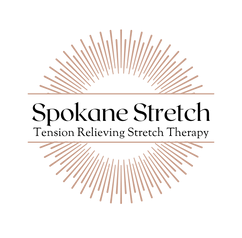Fabulous Fascia: What is it exactly?


Fascia has become a buzz word in the last few years – but what does it do?
Fascia is a thin casing of connective tissue that surrounds and holds every organ, blood vessel, bone, nerve fiber and muscle in place. The tissue does more than provide internal structure; fascia has nerves that make it almost as sensitive as skin. It helps muscles contract and stretch, and it allows them to slide against joints and organs without friction or tearing. Knowing this, when fascia becomes tight and sticky from trauma, repetitive movements, and LACK of movement, it can be quite painful.

Pain in your fascia is commonly mistaken for muscle pain or joint pain. The biggest difference is that muscle and joint pain worsens as you keep moving, while fascia pain gets better with movement and heat.
-
Fascial Stretch Therapy (similar to massage therapy but with the added benefit of bringing movement to the session and freeing sticky fascial).
-
Home Stretching – even just a few minutes per day!
-
Heat Therapy
-
Yoga
-
Foam Roller
-
Massage Therapy
-
Acupuncture
-
Physical Therapy
-
Cold Therapy
-
Fascial blasting tools
Myofascial pain syndrome. Myofascial pain happens when the same muscle is tightened and released over and over again from repeated motion or tension from stress. Symptoms can include deep muscle pain that doesn’t go away, sensitive knots in your muscle, and inability to sleep because of the pain. It’s different from muscle tension pain because it gets worse over time.
Spokane Stretch is located in Spokane, WA and provides Fascial Stretch Therapy. This distinctive assisted stretching method targets not only the muscles but also the fascia. It’s where massage meets movement.
Follow Spokane Stretch on Facebook or Instagram for Stretch of the Week. You’ll be given a small, easy to do stretch that will help your body move with ease.

